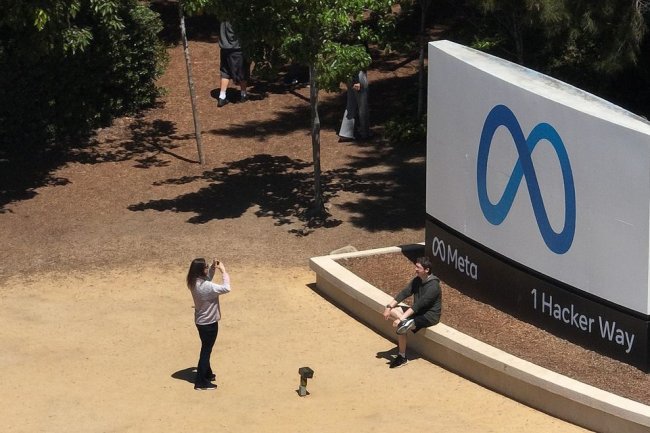Could Scientist Find Drug to Treat His Own Disease?
How 12-year journey to a new Bristol-Myers psoriasis medicine became personal Ryan Moslin helped discover a psoriasis treatment at Bristol-Myers Squibb and as a patient began taking it. By Jared S. Hopkins | Photographs by Hannah Beier for The Wall Street Journal Aug. 13, 2023 5:30 am ET After Ryan Moslin picked up his first prescription for a new psoriasis treatment, he texted his old boss pictures of the drug, and of himself smiling. Moslin had reasons to celebrate: He helped invent the medicine. Now he was a patient taking it. His old colleague’s response pinged his phone: “Medicinal chemist—heal thyself!” Following 12 years of research at Bristol-Myers Squibb, M


After Ryan Moslin picked up his first prescription for a new psoriasis treatment, he texted his old boss pictures of the drug, and of himself smiling.
Moslin had reasons to celebrate: He helped invent the medicine. Now he was a patient taking it.
His old colleague’s response pinged his phone: “Medicinal chemist—heal thyself!”
Following 12 years of research at Bristol-Myers Squibb, Moslin entered rarefied circles last year when a drug for which he was an inventor won regulatory approval. Even more unusual was that he became a patient on the medicine.
“It would have been wildly optimistic to believe what happened could happen,” Moslin said. “It didn’t become real until I got my first pills.”
The drug, Sotyktu, is approved to treat the chronic skin condition psoriasis, which causes rashes with itchy, scaly patches, often on a person’s knees, elbows and scalp. It affects eight million people in the U.S. Sotyktu is the first treatment to block a particular pathway tied to autoimmune diseases such as psoriasis and rheumatoid arthritis.
Analysts see Sotyktu playing a big role for Bristol and generating more than $2 billion in annual sales by 2028. As a pill, Sotyktu could be an alternative to infused and injectable products.
The history of medicine is filled with scientists blending their personal lives with their research. For decades, many self-experimented with their own discoveries. Families of patients with rare diseases have helped fund research or started and led companies. Some scientists are motivated to find better treatments for diseases afflicting family members.
Less common, according to medical historians, are developers of approved therapies who become patients on the drugs.

Sotyktu, according to analysts, could become a multibillion-dollar drug for Bristol-Myers Squibb.
Developing new medicines is hard. Most drugs fail along the way, and successful ones take years to develop—even if a researcher’s health depends on it.
At the beginning, Moslin said, he wasn’t really thinking his work would lead to a treatment he could use. “It’s like buying a lottery ticket and being sure you’re going to win,” he said.
Moslin, 43, was in high school in Canada—in Grand Forks, British Columbia, roughly 4 miles from the U.S. border—when his doctor diagnosed him with psoriasis.
His condition began with just a few plaques on his scalp. Soon he had flaky patches on his legs, elbows and back. He stopped wearing shorts, and a few years ago jeans became too uncomfortable to wear when the lesions became itchy.
“They would catch on things, they would bleed,” he said.
Moslin developed a love for science as a kid. He turned to chemistry in college, drawn by the thrill of using the properties and energies of atoms to create new bonds and molecules—swapping out, say, nitrogen for carbon. “It’s a wonderful combination of science and artistry,” he said.
After completing postdoctoral research at the Massachusetts Institute of Technology, Moslin joined Bristol in 2010 as a senior research scientist.
At the time, Bristol scientists were trying to find a drug that could inhibit an enzyme called TYK2, which scientists had found was involved in immune diseases.
Bristol believed blocking the enzyme from working could stop disease.
When Moslin joined the company, Bristol had already made a major discovery—a TYK2 blocker that binded to the enzyme, but in a way some scientists were unsure would work. It wasn’t potent enough to advance. Given the long odds of success with a new approach, the program was a side project for Bristol. Most of its scientists were uninterested. Bristol gave the job to Moslin.
“Here’s a guy who is young, just out of postdoc, who doesn’t really know drug discovery yet, but is enthusiastic about taking on a new problem,” said David Weinstein, who was then Moslin’s boss. “And there was a problem right in front of us.”
Early on, Moslin said, he was focused on the assignment and not whether he would find a treatment for himself. After about six months, Moslin built a TYK2 blocker with the desired potency. As a thank-you, Weinstein treated him to lunch at a Mexican restaurant a few miles from Bristol’s campus in Princeton, N.J.
Moslin’s molecule was promising enough that Weinstein persuaded Bristol’s scientific leaders to give priority to the program and add several more scientists.
Moslin and his colleagues continued to build molecules, looking for one that the body wouldn’t break down before it could be effective against its target. Scientists call this the exposure level.
Occasionally, he would mention his condition and the prospect of a drug that could work for him. “It was just in passing,” said Steve Spergel, a fellow Bristol scientist on the project. “I remember him telling me and not really grasping the significance of being somebody who suffers from that disease.”
Moslin and his fellow scientists created and tested more than 6,000 molecules before synthesizing Sotyktu in 2013. They sent Sotyktu, known scientifically as deucravacitinib, out for testing to measure exposure. Moslin thought it would fail, so he built more molecules.
About six weeks later, Moslin was in his office, a cramped space filled with papers, notebooks and sketches of molecules. He opened an email with the exposure results from tests in mice. They were positive.
Moslin was surprised, and the results found him wondering whether there really could be a treatment for himself.
“I thought about it more and more,” he said.
Following more animal tests, the drug began human studies. The first positive results showing the drug worked safely arrived in 2018.
Soon afterward, Moslin was in a laboratory hallway with Spergel, who told him the results meant there was a potential treatment.
“That’s when he says, ‘Take a look at this,’” Spergel recalled. Moslin lifted his left pant leg, revealing his lesions.
“That was the aha moment for me, that this was really a big deal,” Spergel said. “I was a little surprised at the extent of the disease.”
SHARE YOUR THOUGHTS
How will this psoriasis drug change your or your family members’ health? Join the conversation below.
The results pushed Moslin to think seriously about the drug as a treatment for himself.
“You have hopes and daydreams almost in some ways,” he said. “The road is so long, and there’s so many times that it can go wrong. I believed that it was possible. The science was so strong.”
After more testing showed Sotyktu outperformed another commonly prescribed psoriasis pill, the Food and Drug Administration approved the drug last September.
Moslin’s doctor prescribed Sotyktu for him the next month. Once he picked up the pills, he texted pictures to Weinstein, the former boss. “That was a very cool moment,” said Weinstein, who left Bristol in 2017.
Moslin said after he took Sotyktu, his lesions shrank, stopped flaring or itching, and were more manageable. He recently left full-time work at the laboratory to work more broadly with Bristol on the drug’s clinical trials and its use by physicians.
He bought jeans for the first time in years, though when they arrived they were too small because he forgot his waist size. Moslin said he was excited to hit the beach with his children for the first time in years.
“I have no problem wearing what I want to wear and being seen how I want to be seen,” he said.
Write to Jared S. Hopkins at [email protected]
What's Your Reaction?













